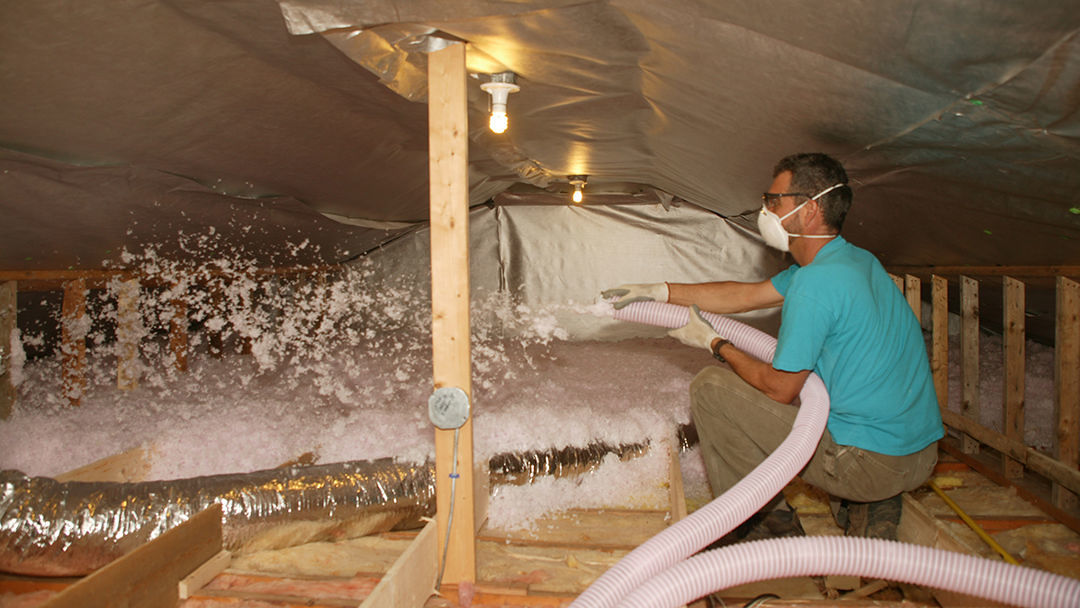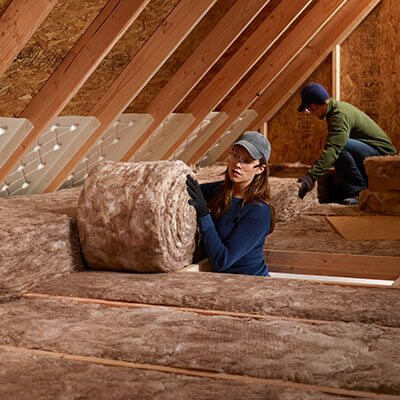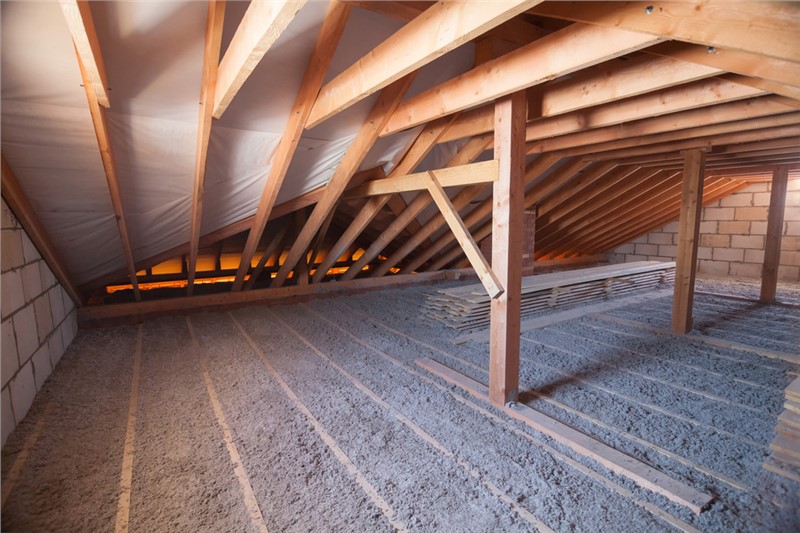Attic Insulation DFW: Increase Your Home's Worth and Efficiency
Wiki Article
Discover the Various Sorts Of Attic Insulation and Their Distinct Advantages for Your Home's Energy Performance

Fiberglass Insulation
Fiberglass insulation is just one of one of the most frequently utilized products for attic room insulation because of its outstanding thermal efficiency and cost-effectiveness. Composed of little glass fibers, this material efficiently catches air, developing a shielding barrier that helps preserve constant interior temperature levels. Its high R-value per inch makes it particularly efficient at withstanding warmth transfer, which is important for power preservation in homes.
Installment of fiberglass insulation is relatively uncomplicated, frequently offered in batts or loose-fill kinds, suiting various attic configurations. Additionally, it is non-combustible and resistant to wetness, lowering the threat of mold and mildew development. This toughness adds to its long life, making fiberglass a viable long-term investment for property owners.
Additionally, fiberglass insulation is often produced from recycled materials, which boosts its eco-friendliness. The product can additionally add to soundproofing, minimizing noise transfer in between areas. While it is necessary to use protective gear during installation to avoid irritability from the fibers, the total advantages of fiberglass insulation, including power financial savings and ecological factors to consider, make it a preferred option for improving attic efficiency and advertising a comfy living setting.
Spray Foam Insulation
Spray foam insulation is a highly efficient choice for attic room insulation, recognized for its premium air sealing and thermal performance. This innovative insulation product is composed of a mixture of isocyanate and polyol material, which, when combined, increases swiftly to fill up voids and dental caries in the attic room. Its capability to abide by various surface areas makes certain a continual barrier versus air leaks, considerably reducing warmth loss throughout colder months and heat gain during warmer periods.Among the essential advantages of spray foam insulation is its high R-value per inch, which suggests it offers excellent thermal resistance in a reasonably slim application. This is especially beneficial in attics where room is often minimal. Furthermore, spray foam can help lessen dampness build-up, reducing the danger of mold and mildew and mildew development, which can be detrimental to both the structure and interior air quality.
While the first cost of spray foam insulation might be more than typical choices, its long-term energy cost savings, paired with enhanced convenience and enhanced home worth, make it a worthwhile investment for home owners seeking improved energy effectiveness. Attic Insulation DFW. On the whole, spray foam insulation stands apart as an efficient remedy for maximizing attic insulation
Cellulose Insulation

Cellulose insulation is a prominent option for attic room insulation, mostly composed of recycled paper items treated with fire resistants. This ecologically friendly alternative is understood for its outstanding thermal performance, efficiently reducing heat transfer in both summer and winter months. The dense structure of cellulose permits it to fill up voids and voids in attic room rooms, supplying a smooth barrier versus air leaks.
Among the significant advantages of cellulose insulation is its ability to withstand mold and mildew and insects, owing to the fire resistant treatments utilized throughout manufacturing. Furthermore, it flaunts a high R-value per inch, which translates into premium energy effectiveness. Homeowners can expect reduced heating & cooling costs as a result of improved insulation.
Installment is commonly achieved via blowing loosened cellulose right into the wanted location, enabling a quick and effective procedure. This method likewise decreases disturbance to the existing structure. Cellulose insulation has a reasonably low environmental impact, as its production procedure makes use of recycled products, contributing to sustainable building practices.
Rock Wool Insulation
Among the different alternatives for attic room insulation, rock woollen, also called mineral wool, attracts attention due to its excellent thermal and acoustic efficiency. Made from natural or recycled materials, rock wool is created by thawing rock and rotating it right into fibers, leading to a product that provides outstanding insulation residential or commercial properties.One of the significant advantages of rock woollen insulation is its high R-value, which indicates its performance in withstanding heat circulation. This characteristic not just boosts power effectiveness however likewise adds to maintaining a comfy interior temperature year-round. Additionally, rock woollen is naturally fire-resistant, making it a safer alternative for homes as it can hold up against high temperature levels without melting or launching harmful fumes.
Additionally, rock woollen insulation stands out in soundproofing capacities, successfully reducing sound transmission between rooms and from outdoors sources. Overall, rock wool insulation supplies an extensive remedy for enhancing energy performance, safety and security, and comfort in property setups.
Glowing Obstacle Insulation
Radiant obstacle insulation serves as an effective solution for minimizing warmth transfer in attic rooms, specifically in warmer climates. This kind of insulation jobs by reflecting induction heat away from living spaces, consequently reducing the amount of warmth that learn this here now enters a home throughout hot weather - Attic Insulation DFW. Usually made up of an extremely reflective material, such as aluminum foil, glowing obstacles are set up in attics, facing the roof, where they can obstruct incoming warm from the sunlightThe primary benefit of radiant obstacle insulation is its capacity to lower air conditioning prices. By reflecting warmth instead of absorbing it, glowing see this page barriers can help keep a more steady interior temperature level, decreasing the work on air conditioning systems. This efficiency converts into reduced energy costs and increased comfort for homeowners.
Along with power financial savings, glowing barriers can also add to boosted interior air top quality. By lowering warmth build-up, they help reduce humidity levels, which can avoid mold and mildew growth and improve total air circulation. When installed properly, glowing obstacle insulation can be a vital addition to any kind of energy-efficient home, making it a deserving factor to consider for homeowners seeking to improve their attic room insulation approach.
Conclusion
To conclude, understanding the different kinds of attic room insulation-- fiberglass, spray foam, cellulose, rock wool, and glowing barriers-- enables home owners to make educated decisions relating to energy effectiveness. Each insulation type provides unique advantages, such as superior thermal resistance, wetness monitoring, and sound depletion. By choosing the appropriate insulation material, substantial reductions in power expenses can be attained, along with enhancements in indoor comfort. Ultimately, the right option adds to a much more lasting living environment and advertises total energy preservation.

In conclusion, recognizing the different kinds of attic insulation-- fiberglass, spray foam, cellulose, rock wool, and glowing obstacles-- allows homeowners to make enlightened decisions regarding power efficiency.
Report this wiki page